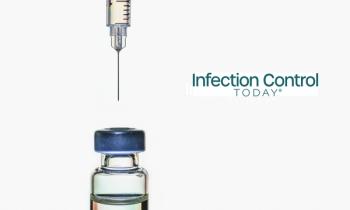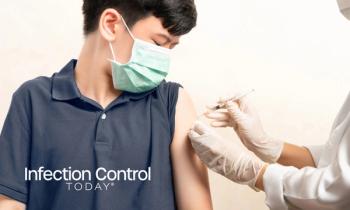
Q&A: COVID-19 and Health Insurers’ Role in Infection Prevention
Brent James, MD: "As soon as you get a health plan involved, it’s all about the money. Turns out that when you reduce infection rates, nearly always that reduces the cost of health care. It takes an investment to make that happen, though. Quality is not free."
Brent James, MD, an internationally known expert on clinical quality and patient safety recently talked to Infection Control Today® about how we’re handling the COVID-19 pandemic, the role of health insurers in infection control, and why you can’t always believe the spread models. James is a clinical professor at the Clinical Excellence Research Center (CERC), Department of Medicine, Stanford University School of Medicine. He was at one time the chief quality officer and executive director of the Institute for Health Care Delivery Research at Intermountain Healthcare.
Infection Control Today®: What should be the role of health insurers in infection prevention?
Brent James, MD: Well, the real action happens on the clinical side where they’re taking care of patients. As you might expect, as soon as you get a health plan involved, it’s all about the money. Turns out that when you reduce infection rates, nearly always that reduces the cost of health care. It takes an investment to make that happen, though. Quality is not free. Takes a change nearly always on the clinical side. The question is: Who gets the savings? Depends on how you’re paid. If you’re paid fee for service, all of the savings go back to purchasers to insurers as kind of unearned benefits, if you will. They might argue that it’s something we should be doing anyway which we should have. On the other hand, you need something to offset the investment and hopefully maybe a little bit of upside for investing in the next project. It all depends on payment mechanisms.
ICT®: Does there have to be a change in payment mechanisms to get insurers more actively involved in infection prevention?
James: I see it happening in a number of places across the country. It’s the difference between fee for service, which is kind of at the base level, moving up to per-case payment, DRGs, mostly up to some sort of provider at risk. There are at least seven or eight different versions of it. The extreme is full capitation. And what that determines is who gets the savings, you see? So, imagine that I run a truly outstanding infection control program. My infection rates drop dramatically. That means we don’t have to pay to treat the infections. Nearly always it has a huge return on investment. Serious money coming out of that thing. If I’m paid for fee for service, all of the savings goes back to the insurance company.
ICT®: Do you think that the United States reacted too slowly to COVID-19?
James: Believe it or not, there have been fewer cases in South Korea with population of what-30 or 40 million people?-then there have been in Utah with 3.1 million people. But the reason is that the South Korean government was on the alert, watching for the … I bet next time well … I don’t know. I was going to say next time I bet we don’t get caught so badly as a country. But give it 20 years 30 years. Let a new crew come into political power, right?
ICT®: You really think that we as a society won’t learn from the COVID experience?
James: You’d sure hope so, wouldn’t you? Now, the other thing that needs to be said about COVID is this. I have a colleague that I deeply, deeply respect at Stanford:
ICT®: Routine healthcare seems to be having trouble, as well.
James: Saw a couple of interesting statistics you might find useful. The number of people appearing in emergency departments is down significantly, at least here in Utah. It’s down 30 to 50%. People just aren’t coming in for fear of exposure in a hospital setting. Some EDs are turning people away if they don’t have very acute symptoms, especially COVID-related symptoms. What we know is, is regular medicine hasn’t disappeared. People are still having heart attacks. They’re still having strokes. They’re still having significant acute needs. People who, in the past, we would have hospitalized and helped. So, we know that the rates are down of caring for those directly. The other thing we know: I was talking to a colleague who runs one of the largest private health systems in the US they have a whole bunch of emergency medical services running. He tells me that the proportion of cases where the EMS team arrives at a person’s home, only to find the patient dead-already deceased-or so close to deceased that they can’t intervene effectively, is up about 30%. COVID is mostly a disease of old people like me, right? With compromised immune systems, not like me. That’s where most of the deaths are occurring. The suicide rate in the young is dramatically larger than any estimated COVID mortality rate, in people who are fairly young and healthy. And almost certainly what we’re doing to the economy is going to increase the suicide rate. I just read a statistic from the World Health Organization that the number of people who are facing imminent starvation is going to bump from about 130 million people worldwide to about 265 million people worldwide. It all settles around our ability to test. To better identify who actually is actively carrying the disease and better identify those who are carrying the antibodies who’ve been exposed. The estimates of the proportion of people who basically caught COVID and had no symptoms are all over the map. The lowest I’ve heard is about one in three people who get COVID have symptoms. There are three studies, by the way, one in New York, one in Los Angeles, one in Santa Clara County, California that suggest that it might be only one in 40 to one in 50 people who get COVID have any detectable symptoms. We don’t know that number. And until we know that number, our ability to model what’s going to happen with it is very seriously compromised. You see now, you could argue it’s better to be a little bit more conservative relative to a nasty thing like this than a little too liberal. Right? You’d rather err on the side of being more protective. And I get that. I kind of agree with it, actually. Holy cow. We need those numbers. That would make such a big difference in our ability to respond. Of course, that does not justify the fact that we were caught absolutely flatfooted. It’s a leadership issue.
ICT®: That and a lack of data?
James: You nailed it. It’s making good decisions in the face of poor information. And then being able to adapt quickly along the way. The one thing we do know is, is if we had better, more reliable testing, that it would be a wonderful aid. And of course, we’re really pursuing that vigorously right now. And I anticipate there’ll be a lot of give and take, a lot of different conversations. But I think over the next month or so, testing rates will really come up. Our strategies for controlling spread of COVID will really come up. We’ll get a much better picture. Again, looking back, we’ll have a much better view. And then we’ll probably be fairly critical of the people who are trying to make the decisions at this point in time with poor information. As just typical human beings. It’ll probably be a little bit unfair. The only real hope is will we be ready next time? Will we have a better handle on it next time? That extra month and a half, two months. Wow, that would have been useful. If we’d been out in front of this.
ICT®: Wouldn’t we have had to know about COVID-19 to develop the test?
James: Yeah. Two kinds of testing that we really need. One is to detect active current disease. The other is to detect antibody levels. To give us a better sense of how it spreads and how fast it spreads and the consequences of it. So that sort of testing coming online. What happened at the start of the epidemic is there was some missteps between the FDA which has to approve the tests. They were running a typical regulatory state with fairly tight controls. There are good reasons for that to protect the public health. They probably should have relaxed those much earlier. CDC was trying to concentrate and devise their own tests as opposed to relying upon a massive reservoir of scientific knowledge and ability out in private industry. The pathologists all around this country who build those tests, you see, and we needed a better, faster response to that. That’s when I say we lost about six weeks. That’s what it was. It’s just dance between CDC and the FDA as they tried to move up onto a war footing if you will. And they were a little slow getting there. Now, in truth, I wasn’t entirely surprised. I believe it’s hard for regulatory agencies to make that shift that quickly. In all fairness, good people, by the way, not a matter of bad people. Good people working hard. It was seeing it early enough that you could start the response fast. Now, in truth, I personally think the Chinese did not serve us well in terms of how they handled information about this. They are a relatively closed society in that regard. And I don’t think that they were as transparent as we would have been, for example. Or any Western society would have been, and that was one of the causes of delay. And it’s a legitimate criticism, to my mind, that they weren’t as open about it as they might have been. But we weren’t as open to hearing it. Or responding to it quickly, you see.
This Q&A has been edited for clarity and length.
Newsletter
Stay prepared and protected with Infection Control Today's newsletter, delivering essential updates, best practices, and expert insights for infection preventionists.






